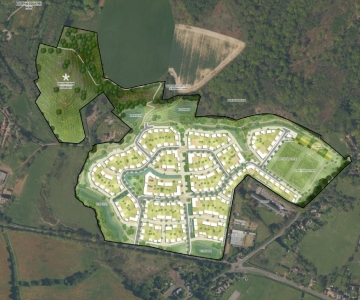New Environment Bill
The government’s long-awaited Environment Bill finally became law in November 2021, nearly three years after the draft legislation was first published.
The new Environment Act 2021 stipulates that all new development must deliver a net gain in biodiversity of ten per cent, either on-site or via offsetting. This is a hugely significant move placing major new duties on landowners, developers and local authorities.
By making net gain a legal requirement from 2023, the Act goes significantly beyond the National Planning Policy Framework, which already calls for plans to deliver biodiversity net gain where possible but sets no target.
Other provisions of particular interest to planning in the Act include:
- Environmental targets for air quality, water, biodiversity, resource efficiency and waste reduction and soil health and quality.
- A 'policy statement on environmental principles' explaining how the environmental principles should be interpreted and proportionately applied by Ministers when making policy.
- The establishment of the Office for Environmental Protection, which describes its duty as to "protect and improve the environment by holding government and public authorities to account".
- Local nature recovery strategies covering the whole of England.
- Species conservation strategies and protected site strategies.
- A power for the Secretary of State for the Environment, Food and Rural Affairs to amend general duties within the Habitats Regulations.
The environmental targets will be set by regulations, which will specify the standard to be achieved and the date by which it is to be achieved.
DEFRA has consulted on the draft policy statement on environmental principles “which sets out how those five internationally recognised environmental principles should be interpreted and proportionately applied” and a response is now overdue.

Biodiversity net gain – How will it work for land promoters?
From November 2023 all planning permissions larger than household permissions will be required to guarantee delivery of ten per cent biodiversity net gain. There will be a targeted exemption for some brownfield sites. A “mitigation hierarchy” is designed to ensure that damage to the most valuable habitats is avoided, rather than simply offset.
Councils will decide whether biodiversity net gain plans proposed by developers are adequate, with gains to be guaranteed for 30 years. Where there is not scope on site, developers will be able to deliver compensation through local habitat creation, which will carry extra weight if designed in accordance with the local nature recovery strategies also being created by the Act. Delivery of this offsetting provision is to be enforced via conservation covenants, with the government to establish a publicly available register of compensatory habitat sites.
Where suitable local projects are not available, the Act allows for the option of investing in government biodiversity units – nationally-created “strategic habitats” managed for biodiversity.
The number of biodiversity units needed for development will depend significantly on the starting state of a site. Brownfield sites and agricultural land have fewer biodiversity units than grassland, woodland and shrub, for example.
From a landowners perspective, there is the opportunity to sell biodiversity units to developers providing and managing biodiversity enhancements on their land.
In due course DEFRA will consult on regulations underpinning the Act which will determine the regulation and governance of offsetting and the precise functioning of the proposed conservation covenants.
Policy before law
Many local authorities are already stipulating mandatory biodiversity net gain requirements in bespoke planning policies in advance of the national requirements coming into force. Of those that do, some require no net loss of biodiversity, some require up to 20% net gain, and others require additional S106 payments.
Therefore, in many instances those promoting land and gaining planning consent for development already need to factor how they are going to deliver the biodiversity enhancements and the costs involved.
Equally developers are already considering how much biodiversity will need to be provided on the sites they buy and reflect it in the price they pay for land.
As an experienced land promoter Catesby Estates have established partnerships with ecologists and technical consultants and already have extensive experience in ensuring that both existing and emerging biodiversity net gain criteria are appropriately achieved as part of our planning promotions.
Ed Barrett – Associate Director, Planning 01788 726810 / edb@catesbyestates.co.uk
Thinking about land promotion for your land site?
We’re actively seeking strategic land sites to add to our land promotion portfolio.
With a proven track record and strong success rate, landowners across the country are encouraged to contact us to find out how we could help you maximise the value of your land.




